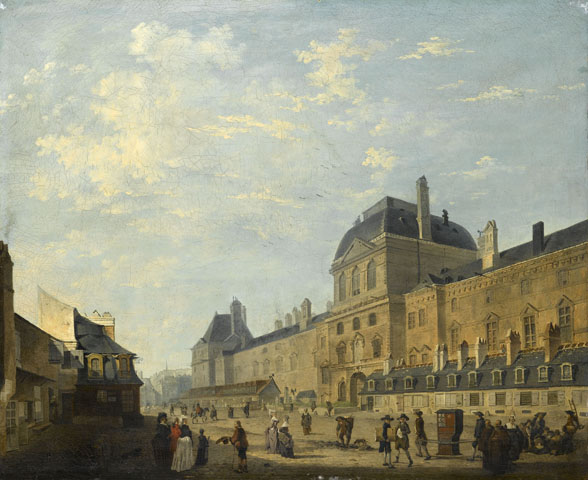Fr : version française / En: english version
mheu, Historical Museum of the Urban Environment
The Louvre façade seen from Rue Fromenteau
Philibert-Louis Debucourt

late 18th century
61cm x 50cm
oil on canvas
Paris, Musée du Louvre
© RMN / Jean-Gilles Berizzi
View this work in exhibition The Street
The artist
Philibert-Louis Debucourt was a respectable genre painter born in Paris in 1755. Debucourt abandoned his trade after the Revolution to devote himself to engraving until his death in Belleville on September 22, 1832.
The term "genre painter" is an abbreviated form of peinture de genre vulgaire (or mineur), used to describe pictures showing scenes of daily life. The crudest of these—scenes of common fairs and bouts of drinking—were nicknamed Bamboches (literally, "scenes of partying").
The good Mr Debucourt, however, focused on street scenes, reflecting the style of the Flemish and Dutch, and notably drawing on the work of the 18th-century Dutch painter Jan van der Heyden (1637-1712) who, beyond his art, made a name for himself through his key contribution to firefighting (with his brother Nicolas, he helped improve the hosepipe and the fire engine, organized brigades and wrote a manual). He also worked on street lighting in Amsterdam, providing a sustainable model for European cities.